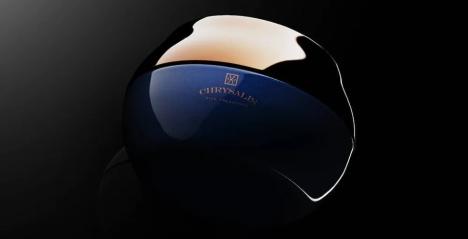What is blue-light? Blue-light, also known as High Energy Visible (HEV) light has wavelengths between 400-500nm. Blue light is found everywhere, not only just from the sun, it is found in our daily use devices such as TV monitors, computers, and smart phones that uses LEDs for illumination.
The main health concern of blue light is the light-induced damage to the retina (sensory component) of the eyes. Animal studies show that blue light can make the pigments in the retina more sensitive to oxidative damage caused by visible light. Fortunately there is evidence that light in the 470-490nm range maybe less damaging making the development of LEDs with peak emission of around 470-490nm safer for our eyes.
The association between blue-light exposure and development of age-related macular degeneration & accelerated skin-aging is relatively new.
However, there are increasingly reports that shows that long-term exposure to blue light emitting sources may cause skin damage, through inflammation and accelerated photo-aging, and skin tone changes.
What are some damaging effects of blue light on the skin and sleep cycle?
Some studies show that blue-light in the range of 460-480nm have a role to play in our sleep-wake cycle (circadian rhythm). A pigment from our retina (eye sensory organ) absorbs this blue-light and sends signals to our brain to regulate this sleep-wake cycle. Studies show that exposure to blue-light increases our alertness and stimulates cognitive functions. One study even showed that exposure to blue-light at bedtime negatively affected sleep and the circadian rhythm. Blue-light may even be used to treat mood disorders, that present with sleep disorders.
This light is part of the electromagnetic spectrum and occupies part of the spectrum between UVA and visible light. It is part of the light that we see from the sun. In fact, blue-light actually penetrates deeper than UVA and UVB, into the dermis layer creating free radicals that can breakdown collagen & elastin and cause inflammation to the skin.
Similar to UV light, HEV light can lead to worsening of hyper-pigmentation. These individuals usually have an underlying hyperpigmentation condition and prolonged exposure to blue-light may trigger and aggravate these darkening.
How else can blue light affect physical and mental health?
Blue-light can affect our sleep-wake cycles and may be used to treat mood disorders with sleep disorder patterns.
As we age, our eye lens opacifies and turns yellow. This reduces the transmission of blue-light into our eyes and might lead to sleep disorders. There is a report of sleep pattern improvement in patients after cataract removal. The evidence out there is controversial, making the association between aging and photo-reception of blue-light into our eyes subject to debate.
What can we do to help defense against blue-light?
The best way is to spend less time on your electronic devices - take regular breaks from looking at the computer screen for long periods of time, turn on the screen function to reduce the brightness of the white light if you plan to spend long periods on your computer.
Another way is to invest in products that helps to shield your skin from the effects of blue-light.
IDS Skincare has offered a range of products, IDS’s DermaShield range, to protect skin against blue-light, just like screen protectors to block out blue-light from phones.
IDS DermaShield Mask
This unique mask is made of 3 different layers of silk cloths to reinforce protection from blue-light. It contains one of the key ingredients, Calendula Officinalis Flower Extract, that helps prevent blue-light damage to our skin. This marigold extract (Calendula) is known as an anti-inflammatory and/or a wound healer. It contains lutein which filter as much as 90% of the high-energy, wavelengths of blue-light from the visible-light spectrum.
IDS DermaShield Serum
With similar ingredients as the DermaShield Mask, this gel-like lightweight serum works equally effective!
Both DermaShield Mask and Serum works like an invisible shield to protects skin from harmful effects of UV, Infra-Red, and HEV or Blue-light, as well as shields against pollution, and reducing PM 2.5 adhesions on skin. It is suitable for all skin types, especially dry and sensitive skin.
IDS Sunscreen - S2 Non-Tinted Sunscreen and S3 Tinted Sunscreen
Other than skincare, it is always important to put on sunscreen. IDS’s newly formulated sunscreens – S2 Non-Tinted Sunscreen and S3 Tinted Sunscreen, are additional ways to protect skin against blue-light but harmful UV rays too. With broad-spectrum SPF50 +++, mineral-based sun protection, patented pollution, blue-light protection, and an anti-oxidant enhancement, allowing each application to act as a health boost and reduce the ricochet impact on the overall condition of the skin!
For more information on IDS Skincare’s product, you can visit www.idskincare.com.
So how do you know if the product with blue-light protection is actually working?
A test can be easily carried out through a simple placebo-controlled experiment to measure the transmission of light (wavelengths 400-490nm) through an empty glass tube and another glass tube containing a liquid that filters off blue-light, using a light emitting device.
Other than the above, the food we consumed also help combat blue-light and improve overall skin and eye nutrition. The best advice is to have a well-balanced diet. To prevent blindness, especially night blindness, Vitamin A is important.
The richest source of vitamin A are livers (eg. beef liver and cod-liver oil).
You can also consume food that are high in Lutein and zeaxanthin.
Foods with lutein and zeaxanthin include:
- Kale
- Spinach
- Collard greens.
- Turnip greens.
- Corn
- Broccoli
IDS Skincare is available at IDS outlets in International Building and Novena Specialist Center and www.jyx.shop.












